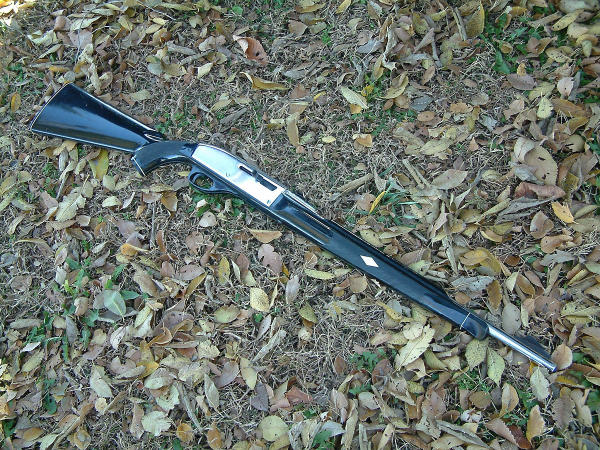Editor’s Note: This piece is an old favorite about old favorites.

I can’t recall exactly when it was that Dad brought home that plastic and nickel rifle. I know I’d been shooting some time. He was a “walnut and steel” type, some of us would refer to him as one of the “Fudds,” a term used in current parlance.
But he was my portal through which I entered shooting.
He had an old Springfield 87A that’d seen better days. Picked up after WWII, it was a tube-feed .22 that would allegedly function as a semi-auto with .22 LR, but as a bolt action gun with Longs, Shorts and about anything else you could find that would fit the chamber. Not an example of the high end gunmaker’s art, it was a practical piece with a barrel as long as History class, a semi-buckhorn rear sight – U-notch – and what appeared from the rear to be a “ball” atop the front sight, a cylinder actually.
The proper sight picture was the ball-in-notch and cover the target you sought to hit. I didn’t try to determine point-of-impact with those varied loads – this was when a box of Shorts were 35 cents and you dug deep for that half-dollar for Long Rifle loads. I wasn’t analytical then.
He taught me shooting through plinking. There were no ranges around to speak of – guns were pretty icky in those bad old days. Remember the Gallup poll from ’58 that showed most Americans wanted a handgun ban. Apparently they did that survey while watching Gunsmoke or some other Western.
The targets were irregular, cans mostly in various positions and attitudes. I struggled with the rifle, long and heavy. My nearsightedness contributed to a natural lack of ability and that front sight was so far away. I’d suffered a broken right arm and for some time had to shoot the long gun from the left side. I found my left eye was my master eye.
In high school, I got the 50 foot smallbore Expert pin once, in my freshman year. Shooting that fine old Remington Target single shot on that ROTC indoor range was mind-numbing. The positions were contrived and served no use I could imagine; my experience had been on cans, twigs, blocks of wood and boulders on the sides of the strip mine dumps just outside our little community.
That’s where I learned 'hold-over.'
Plinking was fun.
He had an old double 16 gauge, a real piece of . . . work. He traded it on a Remington 1100. Made in 1964, it was a 20-gauge on a 12 gauge receiver. Now that was a shotgun. I found I could actually be passable at wing shooting with that gun. So that was the experience before the ‘space gun’ arrived.
Imagine my surprise when he arrived home one day with a package from John’s Sport Center. It was a used Remington Nylon 66. It was shiny black with nickel finished steel, something the glittered and shined. How could this be practical?
He had an optic on it. Why he needed that – he arranged to be born far-sighted – is beyond me. I promptly took it off and gazed through the sights. A square front in a form I’d now refer to as a Patridge with a square notch rear sight. I dug into meager funds to buy Long Rifle ammo, the only thing the finicky critter could consume and pilfered the old man’s stash too.
I learned a lot from that gun. A carbine, just over four pounds with a barrel just under 20-inches, it had a wonderful balance. Slim, trim and quick to shoulder – with that short length of pull -- I could shoot that plastic hammer with equal skill from either side. Sure, I missed with it. That’s where I learned trigger control.
Dad’s gone now. The Springfield and the Remingtons are still around. I hold them and memories of my past come through. He’s here with me as all the others who’ve moved on across the great barrier. Recalling those past times brings a mist to my old eyes.
The best I can do is to pass that legacy on. And hope that it grows as it passes to more generations to come.
-- Rich Grassi